
Glass furnaces are the core equipment in the glass industry. Their service life and the quality of glass products directly depend on the anti-erosion performance of refractory materials. Fused cast AZS blocks, due to their excellent high-temperature stability, chemical inertness, and thermal shock resistance, are widely used in key parts such as the side walls, breast walls, and port neck of furnaces. However, under the continuous erosion of high-temperature glass liquid, the fused cast AZS blocks will suffer damage such as dissolution, peeling, and recrystallization, resulting in a shortened service life of the furnace and defects such as stones and streaks in the glass products. Therefore, in-depth research on the factors influencing the resistance of fused cast AZS blocks to glass liquid erosion is of great significance for optimizing furnace design, improving production efficiency, and reducing energy consumption.
This paper systematically analyzes the key factors affecting the erosion resistance performance of fused cast AZS blocks from four dimensions: material properties, process parameters, furnace structure, and operating conditions, and proposes corresponding improvement strategies.
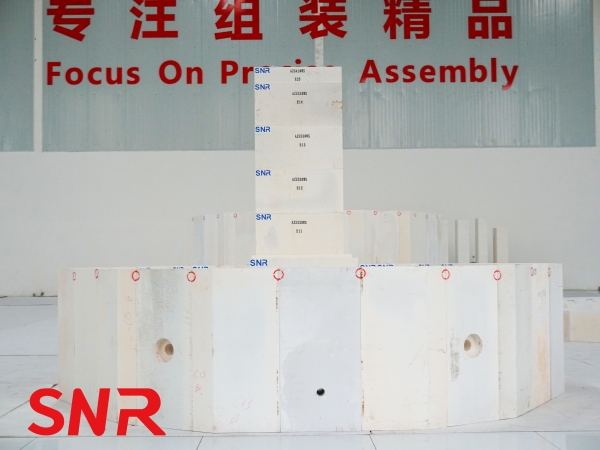
1.The influence of the material properties of fused cast AZS blocks on their resistance to erosion
1.1 Chemical composition and phase composition
The anti-erosion performance of fused cast AZS blocks is mainly determined by their chemical and phase composition. Studies show that zirconia corundum fused cast AZS blocks with a higher content of zirconia dioxide (ZrO2) have better erosion resistance. For instance, in the static erosion test of ZAC1711 type fused cast AZS block at 1550℃, the erosion rate was only 0.11 mm/day, significantly lower than that of ZAC1681 type (0.22 mm/day). This is because the introduction of ZrO2 can enhance the density and chemical stability of the material and reduce the reactivity between the glass liquid and refractory materials.
In addition, the content of the glass phase in fused cast AZS blocks has a decisive influence on their erosion resistance. The glass phase is the weak link of fused cast AZS blocks. The higher its content, the lower the durability of refractory materials. For example, when the content of the glass phase increases from 8.5% to 31%, the erosion resistance of the fused cast AZS block decreases by 70%. This is because the glass phase is prone to precipitate at high temperatures, which damages the compactness of the material structure, increases the contact area with the glass liquid, and accelerates the erosion process.
1.2 Microstructure
The microstructure of fused cast AZS blocks has an important influence on their erosion resistance. The ideal microstructure should have the following characteristics:
• Abundant and well-developed eutectics: The ZrO2 coagulation phase in the corundum base crystal is uniformly distributed, fine, and has a high density, reducing the independent existence of corundum crystals.
• Low and evenly distributed glass phase content: Reduces local enrichment of the glass phase and lowers the probability of erosion channel formation.
• Fewer scattered zircon stones in a beaded pattern: Avoid the isolated existence of zircon particles and reduce stress concentration points.
1.3 Glass phase exudation temperature
The glass phase exudation temperature is an important indicator for measuring the erosion resistance of fused cast AZS blocks. When the fused cast AZS block comes into direct contact with the glass liquid, the seepage of the glass phase at high temperatures will lead to intensified erosion of the brick body and the formation of defects such as bubbles, stones, and streaks in the glass. The factors influencing the glass phase exudation temperature include:
•Degree of oxidation: The higher the degree of oxidation, the higher the exudation temperature of the glass phase.
•The chemical composition of the glass phase: The higher the total amount of fluxes such as Na2O, B2O3, Fe2O3, TiO2, and CaO, the lower the viscosity of the glass phase and the easier it is to exude.
Therefore, by optimizing the formula and firing process of the fused cast AZS block and increasing the glass phase exudation temperature, its erosion resistance can be significantly improved.
2. The influence of process parameters on anti-erosion properties
2.1 Temperature
Temperature is a key factor affecting the erosion resistance of fused cast AZS blocks. Studies show that the erosion rate of fused cast AZS blocks increases exponentially with the temperature rise. For every 50℃ increase in temperature, the erosion rate doubles. This is because:
►Chemical erosion intensifies: At high temperatures, the alkaline oxides in the glass liquid (such as Na2O, CaO) react with components like SiO2 and Al2O3 in the fused cast AZS block to form low-temperature eutectic substances, accelerating the erosion process.
►Enhanced physical erosion: At high temperatures, the viscosity of the glass liquid decreases and its fluidity increases, intensifying the scouring effect on the fused cast AZS blocks.
Therefore, during the glass melting process, the temperature of the furnace should be strictly controlled to avoid local overheating. For instance, the hot spot temperature of a float glass melting furnace is usually controlled at around 1600℃. Both excessively high and low temperatures will accelerate the erosion of electrically fused cast AZS blocks.
.jpg)
2.2 Flow rate of glass liquid
The flow rate of the glass liquid is another important factor affecting the erosion resistance of fused cast AZS blocks. The faster the flow rate of the glass liquid is, the stronger the scouring effect on the fused cast AZS block will be, and the faster the erosion rate will be. The factors influencing the flow rate of the glass liquid include:
►The discharge volume of the furnace: The greater the discharge volume, the faster the flow rate of the glass liquid.
►The operating temperature of the furnace: The higher the temperature, the lower the viscosity of the glass liquid and the faster the flow rate.
►Liquid flow stability: The greater the fluctuation of liquid flow, the stronger the scouring effect on the fused cast AZS block.
Studies show that the area 300 millimeters below the glass liquid level line is the severely eroded part of the sidewall. This is because the viscosity of the glass liquid in this area is low, and the flow rate is fast. Therefore, by optimizing the feeding method, stabilizing the liquid flow, and reducing the fluctuation of the material mountain, the erosion rate of the fused cast AZS blocks near the liquid level line can be significantly reduced.
2.3 Furnace atmosphere
The atmosphere of the furnace has an important influence on the erosion resistance of fused cast AZS blocks. Under a reducing atmosphere, the content of Fe²⁺ in the glass liquid increases, resulting in a decrease in the viscosity of the glass liquid and an increase in its corrosiveness. In addition, the reducing atmosphere will also promote the reduction of SiO2 in the fused cast AZS blocks, generating SiO2 gas and intensifying the erosion process.
Therefore, during the glass melting process, the atmosphere in the furnace should be strictly controlled to maintain an oxidizing atmosphere. For example, by adjusting the ratio of fuel to air and optimizing the design of the burner, the atmosphere of the furnace can be effectively controlled.
3. The influence of furnace structure on resistance to erosion
3.1 Furnace depth
The depth of the furnace has an important influence on the erosion resistance of fused cast AZS blocks. The greater the depth of the furnace, the greater the static pressure of the glass liquid, and the stronger the scouring effect on the fused cast AZS blocks. In addition, the depth of the furnace also affects the flow pattern of the glass liquid, intensifying local erosion.
Therefore, when designing a glass furnace, the depth of the furnace should be reasonably determined based on the composition of the glass, the melting process, and the anti-erosion performance of the fused cast AZS blocks.
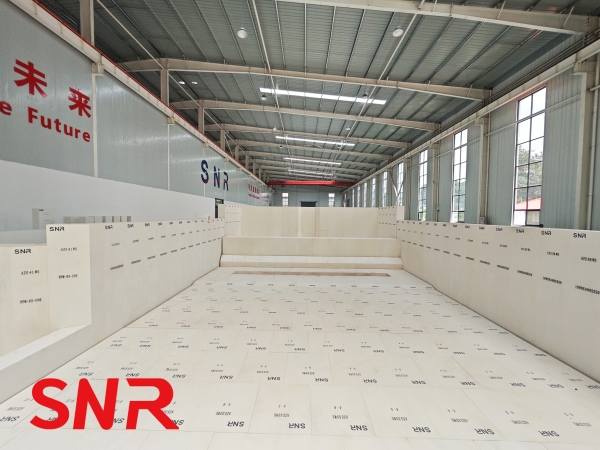
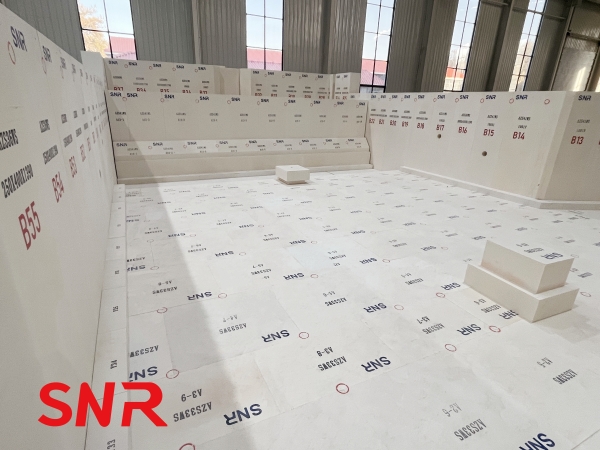
3.2 Cooling Conditions
The cooling conditions have a significant influence on the erosion resistance of fused cast AZS blocks. Good cooling conditions can reduce the working temperature of fused cast AZS blocks and slow down the erosion process. For instance, in float glass melting furnaces, air cooling is usually adopted to protect the sidewalls. By controlling the flow rate and wind speed of the cooling air, the temperature of the sidewall blocks can be effectively reduced, thereby extending their service life.
Studies show that when the cooling air flow rate on the back of the sidewall blocks is 1000 liters per second and the wind speed is 30 meters per second, the erosion rate at the liquid surface line can be significantly slowed down. If the minimum air volume in the severely eroded area increases to 1300 liters per second and the flow velocity increases to 50 meters per second, the erosion rate can be further reduced.
3.3 Insulation Measures
Insulation measures have an important influence on the erosion resistance of fused cast AZS blocks. Good insulation measures can reduce the heat loss of furnaces, lower the working temperature of fused cast AZS blocks, and slow down the erosion process. For instance, by applying high-quality insulation materials to the sidewalls, breast walls, and other parts of the furnace, the temperature gradient of the fused cast AZS blocks can be effectively reduced, and the cracks and spalling caused by thermal stress can be decreased.
In addition, insulation measures can also improve the temperature distribution of the furnace, reduce local overheating, and extend the service life of the electrically fused cast AZS blocks.
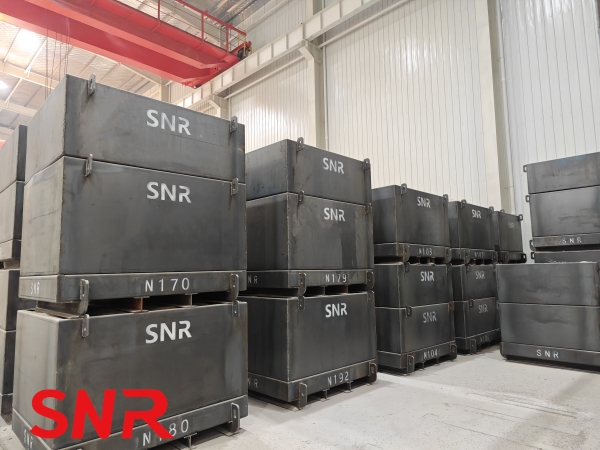
3.4 Brick shape and arrangement
The shape and arrangement of brick materials have a significant influence on the erosion resistance of fused cast AZS blocks. Reasonable brick shape and arrangement can reduce the number and width of brick joints, lower the probability of glass liquid seeping into the brick joints, and decrease the formation of erosion channels. For instance, the use of special-shaped bricks can reduce the number of brick joints and enhance the overall sealing performance of the furnace. In addition, the arrangement of brick materials should also take into account the compensation for thermal expansion. For instance, by arranging the side walls, breast walls, and other parts of the furnace in a circular or staggered manner, cracks and spalling caused by thermal stress can be reduced.
4. Operating conditions to resist the influence of erosion
4.1 Feeding method
The feeding method has an important influence on the erosion resistance performance of fused cast AZS blocks. The traditional feeding method will cause the material mountain to show periodic collapse and accumulation changes, which in turn lead to frequent changes in the glass liquid flow in the furnace and aggravate the erosion of the furnace body. For instance, near the liquid level line of the sidewall blocks, the change in the flow rate of the glass liquid caused by the fluctuation of the material mountain will lead to an accelerated erosion rate of the fused cast AZS blocks in this area.
Therefore, by optimizing the feeding equipment and reducing the fluctuation of the material mountain caused by feeding, the erosion rate of the fused cast AZS blocks near the liquid level line can be significantly reduced. For instance, measures such as extending the feeding drop point, reducing the area of the material pile, and minimizing the fluctuation of the material mountain can be adopted to stabilize the glass liquid level in the furnace and lower the erosion rate.
4.2 Stability of furnace operation
The operational stability of the furnace has an important influence on the erosion resistance of fused cast AZS blocks. Unstable operation of the furnace can lead to fluctuations in parameters such as temperature, liquid flow, and atmosphere, intensifying the erosion of fused cast AZS blocks. For instance, fluctuations in furnace temperature can lead to changes in the thermal stress of fused cast AZS blocks, causing cracks and spalling. The fluctuation of liquid flow will lead to an enhanced scouring effect of the glass liquid on the fused cast AZS blocks, accelerating the erosion process.
Therefore, by strengthening the automatic control of the furnace and optimizing the operation procedures, the operational stability of the furnace can be improved, and the erosion of electrically fused cast AZS blocks can be reduced.
4.3 Furnace construction technology
Furnace construction technology has a significant influence on the erosion resistance performance of fused cast AZS blocks. During the furnace construction process, the size of the brick joints, dimensional errors, and the use of slurry will all affect the overall sealing performance of the furnace and the anti-erosion performance of the fused cast AZS blocks. For instance, overly large brick joints or uneven slurry filling can cause the glass liquid to seep into the brick joints, forming erosion channels. Excessive dimensional errors can lead to uneven force distribution on the fused cast AZS blocks, causing cracks and spalling.
Therefore, during the furnace construction process, the size of the brick joints and dimensional errors should be strictly controlled, and high-quality slurry should be used for filling to enhance the overall sealing performance of the furnace and the anti-erosion performance of the fused cast AZS blocks.
5. Conclusion
The resistance of fused cast AZS blocks to glass liquid erosion is comprehensively influenced by multiple factors such as material properties, process parameters, furnace structure, and operating conditions. By optimizing the material formula, controlling the process parameters, improving the furnace structure, and strengthening the process management, the erosion resistance of fused cast AZS blocks can be significantly enhanced, the service life of the furnace can be prolonged, and the defect rate of glass products can be reduced.
In the future, as the glass industry develops towards larger scale, higher efficiency, and greenness, higher requirements will be put forward for the anti-erosion performance of fused cast AZS blocks. Therefore, it is necessary to further strengthen the research and development of fused cast AZS block materials, explore new anti-erosion materials and processes, and provide technical support for the sustainable development of the glass industry.
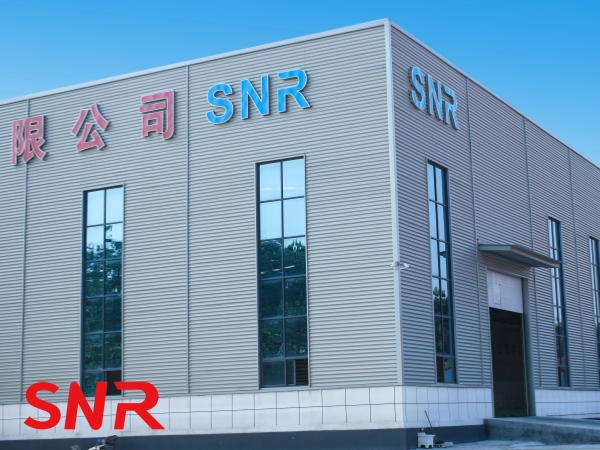
Henan SNR Refractory Co., Ltd (SNR) produces a variety of high-quality fused cast AZS blocks. If you have any needs, please contact us.